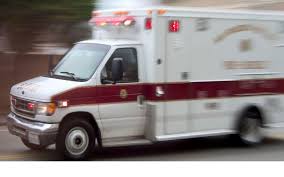Critical care transport nurses work to keep patients stable and healthy while they are being moved, and every February 18, their work is honored. The day recognizes how critical their work is to the healthcare organization.
Critical care transport nurses work in diverse and constantly changing conditions. They might be Med-Flighting a critically injured patient from a car accident or they may be moving an ill elderly patient from a nursing home to a medical facility. Those two fairly typical scenarios show just how prepared critical care transport nurses must be for whatever situation a day at work brings.
Founded nearly 40 years ago, the Air & Surface Transport Nurses Association (ASTNA) is the professional organization for nurses in the field and sponsors this recognition day. According to the ASTNA, this career path is one that relies on skills build from a solid foundation of education and practice around nursing and trauma care.
The ASTNA offers the following education and experience requirement guidelines to become a critical care transport nurse:
- Registered nurse standing in the state you’ll practice in
- Two to three years of critical care/emergency experience or applicable acute care nursing environment
- BCLS – Basic Cardiac Life Support
- ACLS – Advanced Cardiac Life Support Certificate
- PALS – Pediatric Advanced Life Support Certificate
- NRP – Neonatal Resuscitation Program
- A nationally recognized trauma program such as TPATC (Transport Nurse Advanced Trauma Course (TPATC), BTLS (Basic Trauma Life Support), PHTLS (Pre-hospital Trauma Life Support), TNCC (Trauma Nurse Core Curriculum)
- Certifications such as Certified Flight Registered Nurse (CFRN), Critical Care Registered Nurse (CCRN), Certified Emergency Nurse (CEN) may be required within six months to one year of hire
- Some states may require nurses to have EMT-B or EMT-P (Paramedic) certification.
These requirements show the broad knowledge critical care transport nurses must have as they can be called on to use each skill at any given moment. They could be treating patients who range in age from newborn to centenarians. Their trauma skills need to be current and precise, and they also have to develop the ability to provide critical care in a moving vehicle or in flight. That means critical care transport nurses need to be able to react with exceptional speed and in with a calm and controlled manner.
If you’re a student nurse thinking of this role, know you’ll need to have an agility to simultaneously assess
- the situation (a neighborhood with a mom who is in labor to a dangerous industrial accident site)
- the patient (taking into account the location could be a home, highway, medical facility, office building, forest, or even a battlefield for military nurses)
- the conditions (normal, blizzard, hurricane, flooding)
- the transport vehicle (ambulance, helicopter, medical transport plane)
The work is exciting and satisfying for nurses who are willing and able to work in many layers of changing conditions. Critical care transport nurses often bring a sense of calm and relief to a patient who understands someone is now there to help them, provide care, and bring them to safety.
Critical care transport nurses deserve the recognition they get today – thank a critical care transport nurse in your life!
- WOC Nurses Week Highlights Specialty - April 16, 2024
- Honoring Radiology Nurses Day on April 12 - April 12, 2024
- Travel Offers New Career Possibilities - April 8, 2024



